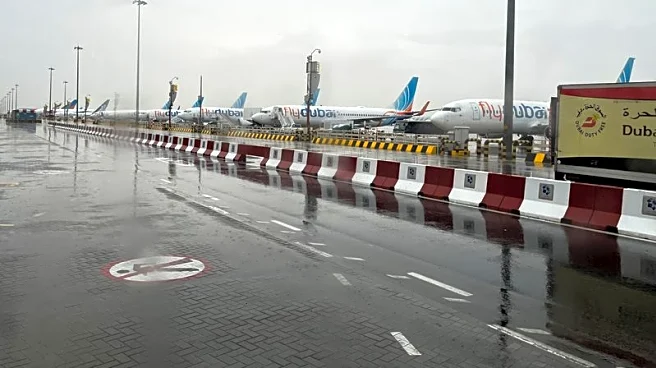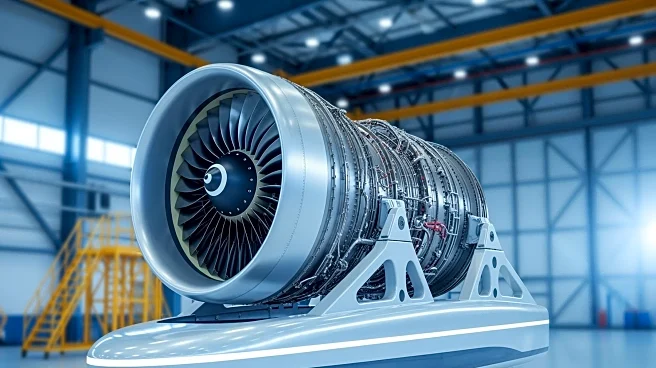What's Happening?
Boeing is progressing to the next stage of flight testing for its 777X aircraft, specifically the 777-9 model, despite recent delays in its certification process. The FAA has granted clearance for the continuation
of testing, which will focus on avionics and systems over the coming months. Boeing Commercial Airplanes President and CEO Stephanie Pope expressed disappointment over the delays but emphasized the importance of transparency with customers. The first 777-9 development aircraft, WH001, is set to undergo stability and control testing, with updates to its fly-by-wire flight control system. The program, initially launched in 2013, has seen its first deliveries pushed to 2027, seven years later than planned.
Why It's Important?
The delays in the 777X program have significant implications for airlines that have been anticipating the new aircraft to enhance their fleets. The postponement affects operational planning and fleet upgrades, potentially impacting airline schedules and capacity. Boeing's transparency and communication with its customers are crucial to maintaining trust and managing expectations. The advancement in testing phases indicates progress, but the extended timeline may influence market dynamics and competitive positioning within the aviation industry.
What's Next?
Boeing will continue with Phase 3 and 4 of the FAA Type Inspection Authorization, focusing on avionics and systems testing. The company aims to address any issues discovered during testing to ensure the aircraft meets certification requirements. Airlines and industry stakeholders will be closely monitoring Boeing's progress, as further delays could affect their strategic planning and operational capabilities. Boeing's commitment to transparency will be key in managing customer relations and expectations.
Beyond the Headlines
The extended timeline for the 777X program highlights challenges in aircraft development and certification processes, which can have broader implications for innovation and competitiveness in the aerospace industry. The need for rigorous testing and compliance with safety standards underscores the complexity of introducing new technology in aviation. The situation may prompt discussions on streamlining certification processes while maintaining safety and reliability.












